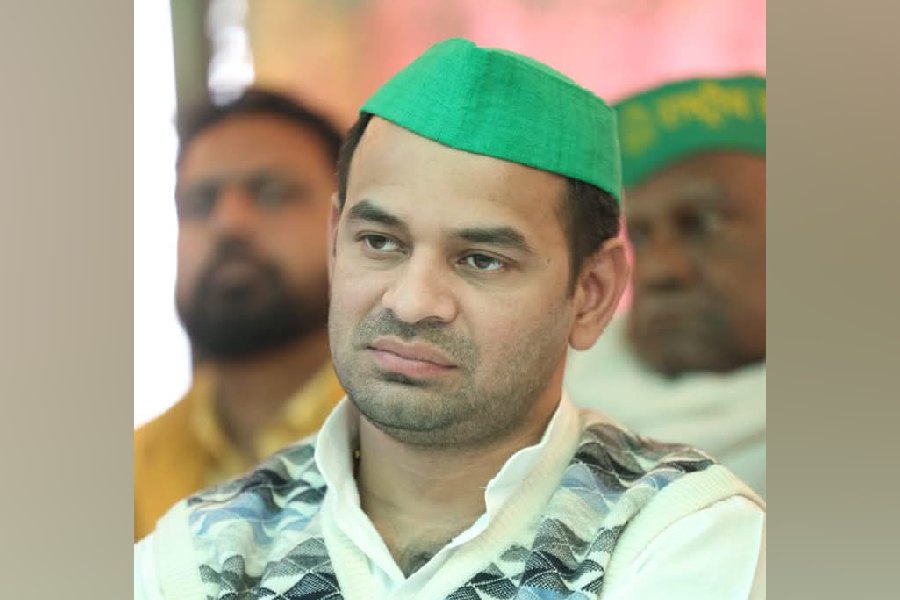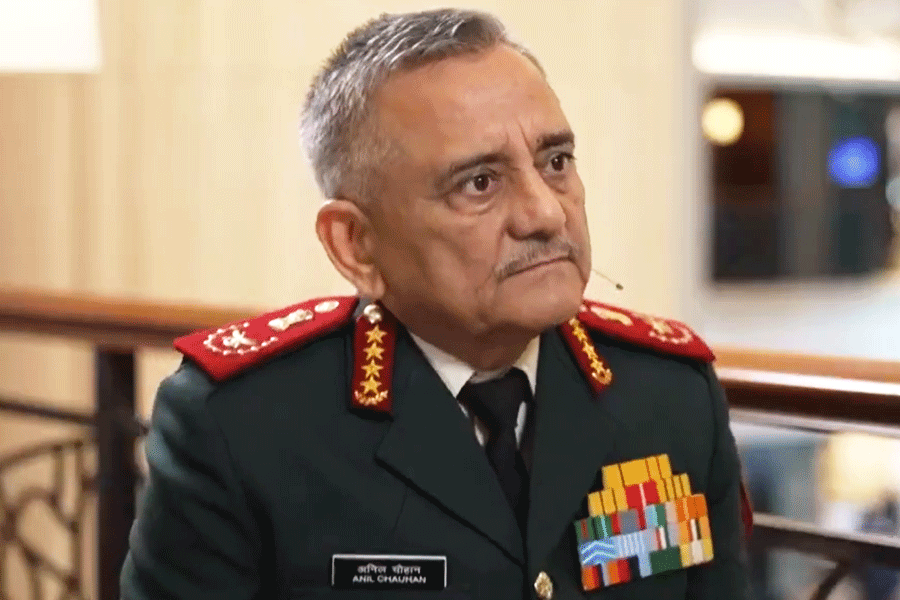 |
At the outset I would like to record my appreciation and congratulate KIFF for instituting the Satyajit Ray Memorial Lecture. I feel delighted that I have been chosen for the singular honour of delivering the inaugural address. I think Ray — Manikda to us — would have been both amused and happy about this. As is now well known, it was he who introduced me to cinema. It was Apur Sansar and Devi that opened the doors of Hindi cinema for me. Many producers-directors from Bombay had seen these films and liked me well enough to want me in their films. Today, I am better known for my films made in Bombay, but throughout my career, I continued working in Bengali cinema. If today I stand before you to reflect on the legacy of Satyajit Ray both within and outside the Bengal film industry, with any measure of confidence, it is because I have been both outsider and insider. Such a paradoxical location brings its own benefits, and it is from that vantage point that I speak today.
My association with Manikda began in 1958 and continues to this day even after his passing. And what a privilege and an education it has been both professionally and personally. Is it not incredible that well over 50 years after he made his first film and 20 years after his death, his films continue to be part of our discourse, our consciousness, seen and admired in so many countries and so many cultures? It is a tribute not only to the artistic merits of his films but what has been called ‘the essential humanism’ of Ray which lives on through time and space. It is only appropriate, therefore, that we remember Ray through the rich and varied legacy that he left us.
I am sure all of you are only too aware, the legacy of Ray far exceeds the films and documentaries he made. In fact, he arrived with a formidable inheritance. His grandfather, Upendrakishore Ray Chowdhury, was a writer, a publisher who invented halftone printing in India. His father, Sukumar Ray, was a writer, illustrator and author of nonsense verse that almost all Bengali children know by heart (or should I say knew by heart). Ray inherited their talent and some more. He was a writer whose books sold in millions and continue to do so. He was an illustrator, designer, artist, music composer, and film-maker. He was a man who embodied the Bengal Renaissance as it were. Soumitra Chatterjee says in his book, Manikda and I, when asked specifically why, despite being exceptionally gifted in so many disciplines, he chose to be a filmmaker, Ray had answered: “It seemed to me that there was no opportunity any more to climb to the pinnacle of excellence in these fields. So I chose a medium where there is room for fresh work. We haven’t made much progress in cinema in our country. That is why I am a film-maker.” What others lost, cinema gained. And true to his words, he pioneered a whole new sensibility about films and filmmaking in India that compelled the world to reshape its perception of Indian cinema.
The most enduring and endearing legacy of Ray, I feel, are characters he created through his films. Unlike the popular cinema of his time, he did not paint his characters in extremes of black and white, good and bad; Ray’s characters lived in an instantly recognizable middle ground. They moved in a layered landscape of a variety of human emotions and motivations. It was the struggle of the ordinary person that interested him. There are no heroes in his films; instead, you have the brave heroism of the ordinary individual battling with the problems of their day-to-day lives. Thus, he created human archetypes that were easily identifiable but not easily forgotten. Consider the sweep his characters represent. Apu’s journey from adolescence to adulthood, his conflict with tradition and modernity, the young and vulnerable daughter-in-law in Devi. The upwardly mobile executive of Seemabaddha and his struggle with his ethics and ambition; the feudal landlord in Jalsaghar who would rather break than bend; the bored but intelligent housewife in Charulata; the troubled and alienated actor in Nayak. These characters will live with us forever because they define the complexity of the human condition. Their human predicament and dilemmas continue to resonate for us even today. As Pauline Kael says, “There is no one more than Ray who makes us re-evaluate the commonplace.”
Ray will be particularly remembered for the array of complex women characters he created. This is immensely significant in a country where women characters in cinema have always had, and continue to have, a secondary role to play, primarily as the hero’s lover who exists only in relation to the hero. Ray’s women were primary protagonists in their own right. They exuded a restrained energy; perhaps best described by the expression that Ray used to describe the cinema of Kurosawa — “Fire Within, Calm Without”: a metaphor inspired by Mount Fujiyama. Ray’s women characters struggle with countless odds: for economic freedom as in Mahanagar, the freedom of choice in marriage (Kapurush, Samapti in Teen Kanya), transgressive erotic desires (in Charulata, Seemabaddha, Aranyer Din Ratri), retaining her dignity in an unequal and patriarchal world (Aranyer Din Ratri, Mahanagar, Nayak). These women are exceptional in the way they articulate their emotional, sexual and intellectual longings. In a gesture that pre-dates the women’s movement in India, the female protagonist in Mahanagar stands up to her husband and his family and refuses to give up working simply because her identity of being a working woman had hurt the husband’s ego. Similarly, when she resigns from her job, it is to protest against the wrongful dismissal of a woman colleague with whom she chooses to stand in solidarity. Many of his women characters, despite being understated, are extremely effective and firm in their rejection of the deadwood of tradition. This in itself was a dramatic departure from a majority of films that were being made at the time.
Ray had a special relationship with his actors. He did not share the popular film industry’s preoccupation with stars and preferred to cast newcomers in his films. On the odd occasion when he did cast stars, he cast them against the grain like Amjad Khan in Shatranj Ke Khiladi and Waheeda Rehman in Abhijaan. Take, for instance, Uttam Kumar in Nayak. Since it was the story of a matinee idol, Ray felt that Uttam would trigger immediate identification. But the story dealt, not with his stardom, but with the conflicts of his inner self; his longing for something real and tangible on one hand and the consequences of his success on the other. Nayak showed the underside of ‘heroism’ — it explored the vulnerabilities and loneliness of stardom.
If you ask me what aspect of his craft fascinated me the most I would say it was his ability to get the best out of his actors with the least obvious effort. He continually combined professionals with newcomers in a manner that one could not tell the difference. While directing actors he offered unlimited freedom to some while strictly controlling others. If anything, he tended to direct professionals more than newcomers and this included Chhabi Biswas in Devi, Uttam Kumar in Nayak and Sanjeev Kumar in Shatranj Ke Khiladi. Ray’s directing of Uttam Kumar in Nayak — especially with regard to speaking his lines and using his voice — left a lasting impression on me. I experienced this when I was an observer while he explained a scene to a drunk Uttam (in the film of course), standing next to the open door of the train. I think Uttam himself may have imbibed quite a lot from his association with Ray which subsequently made an impact on his post-Ray performances. Ray never over-instructed — and the way he read out the scene was enough for all of us actors to understand how to play the character. His praise was equally brief — usually a happy “Excellent — next shot” was all he said. But it energized and inspired all of us.
Although we were given these magnificent handwritten scripts well before the shooting started, we were discouraged to memorize our dialogues. There were no extensive workshops. Even on the set there were two or three rehearsals at the most — mainly for the camera crew and then usually one or two takes or very rarely, another one. Too many takes cost time and film stock — these were luxuries he couldn’t afford. He had the actors’ complete trust — as Soumitra says about him quoting Brando on Chaplin, “Even if he gave us a telephone directory as the script — we would agree to do it.” Sir Richard Attenborough said as much to him when he was offered the role in Shatranj Ke Khiladi. Allow me to digress and share a personal experience about acting. While performing in popular mainstream films, whenever I tended to pause or took a trifle longer to speak, I was teasingly told that I had to speed up because this was not a Ray film. In Bengal it was the opposite: I was reminded that this wasn’t Bombay cinema so I should pause and think before I act.
Ray was extremely skilful when it came to directing children. I was no more than a child myself in Apur Sansar and I have seen him direct other children. He would sit on a stool, look them in the eye and narrate the scene. He didn’t over-explain, again never saying more than the essential — but they got it right every time, giving us a range of extraordinary child characters who are wise and full of wonder. The secret was — as Soumitra Chatterjee observes — “He never thought of children as children but gave them as much importance as adults, and mingling with them as though he was one of them. As a result they were quick to make friends with him. He himself never lost the curiosity and wonder of a child.”
Ray also had the cinematic ability to transform spaces into protagonists. He turned his sets, the physical spaces, the props, into characters that impact the narrative in significant ways. Therefore, the train in Nayak is a character as is the house in Jalsaghar. Let me recall here a personal experience. Thirty years after Apur Sansar was shot, I revisited that terrace tenement one more time. I was accompanied by Catherine Berge who made a documentary on Soumitra Chatterjee. The house had remained exactly the same and seemed untouched by the passage of time. That is when I got an insight into Apu the writer and what this terrace room must have meant to him. Apu’s house is located in a crowded area and is a beehive of people and activity. When he walks up the stairs, he is aware of inquisitive, prying eyes. Nowhere in the city can he afford any privacy. But once he enters through the door into the terrace he is alone under the open sky. When after so many years, I returned to the terrace with Catherine, I heard the cacophony of the city recede and the only sound that remained was that of the passing train. I began to understand what Apu must have felt each time he came in through the door and saw the open sky. I realized then — more than when I had shot for the film — how evocative this location had been to the delineation of Apu’s character.
Like the spaces that he chose to locate his stories and characters in, sound too was used to give depth and texture to his films. The soundtrack in Ray’s films celebrates the ordinary by using familiar everyday sounds: radio music from an adjoining house, the delicate melody of bamboo pines rubbing against each other, the barking of dogs or the passing of trucks are all used to heighten the emotive register of his films. Very often music would be used as a sound-effect as in the famous scene in Pather Panchali when Harihar gets to know that his daughter has died. I am sure most of you know that he could read and write music but I wonder how many of you know that he could also whistle beautifully — Brahms, Beethoven and everything else. A discussion on the soundscape that Ray created would be incomplete if we did not talk about how economical he was with dialogues. In a film culture that is heavily reliant on words, Ray introduced restraint. Very few filmmakers can liberate themselves from words like Ray did and it was this very quality that he admired in Kurosawa. Sometimes he created the most eloquent scenes with just sound, music and images. Apu and Durga caught in a thunderstorm, Aparna’s death in Apur Sansar, the culminating scenes in Seemabaddha and Sadgati are all examples of pure cinema. But when he does use words it has a momentous cinematic impact.
Most importantly, Ray could reflect upon his own work with a certain detachment — at least during the making of it. Style was never allowed to override content. If he felt that a scene, even after shooting it, wasn’t wholly integrated in the narrative he had no hesitation in deleting it. His work was more important than his ego. He came to the studio totally prepared — whether outdoors or indoors he seemed in complete control of his surroundings.
As this audience knows only too well, the rich and varied repertoire of Satyajit Ray cannot be adequately represented by just the Apu Trilogy. He dealt with a wide range of subjects and genres informed by his vast and varied interests. This included highbrow satire (like Parash Pathar, Mahapurush), evocative period pieces (like Charulata, Shatranj Ke Khiladi, Ghare Baire), epic sagas (the Apu Trilogy), musical fantasies (Goopy Gyne Bagha Byne), political parables (Hirok Rajar Deshe) and detective films (Chiriakhana, Sonar Kella, Joy Baba Phelunath). Ray is most famously associated with Realism. This claim is not wrong because the Italian neo-realists made a deep impression on him. But he was also a man who was deeply imaginative and could enter the subjectivities of his characters with a great sense of insight and lyricism. Hirok Rajar Deshe aptly demonstrates this.
What makes this range astounding is that they were created despite the many material constraints he had to face throughout his career — budget, technology, marketing and distribution. Right from his first film, Ray’s was a perennial struggle to procure funds to finance his art. The making of Pather Panchali is now part of film folklore. The conditions in which he made his films are unimaginable now. Studio floors were full of potholes which made a simple trolley shot a challenge. Those were the days of load shedding in Calcutta and the erratic power situation cost him dearly; he didn’t have the right pieces of equipment — and had to improvise continuously. And sometimes these improvisations brought out the best, like the invention of the bounce light, the back projection in Nayak (which was quite flawless). All this was achieved with a minimalist team — his cameraman, Subroto Mitra, and his art director, Bansi Chandragupta. The trio’s contribution to cinema has been phenomenal. Charulata epitomizes this excellence. With such poor working conditions, they managed nevertheless to compete with the best in the world and won international acclaim. But after Nayak, Ray went solo. He started doing everything himself. Screenplay, camera operation (the memory game in Aranyer Din Ratri is a testimony of his superb handling of the camera), set design, in Hirok Rajar Deshe, he even chose the fabric himself, his musicals needed such elaborate work. He also did the wardrobe, music, title credits, publicity posters, everything. But typically, he took money for just two things: screenplay and direction. I don’t think there has been another director quite so versatile and quite so hardworking. But I think this budgetary constraint added to the overall stress of film-making, and I wouldn’t be surprised if this (more than smoking) wasn’t the cause of his poor heart condition. I remember him sitting next to the camera, chewing his handkerchief. He ruined one handkerchief daily, much to his wife’s dismay. The commitment to his art despite the conditions in which he worked, the steadfastness, the refusal to compromise for any consideration whatsoever, are ultimately at the heart of his legacy.










